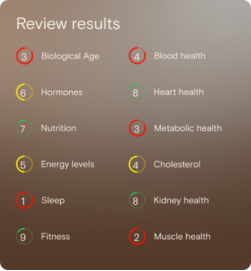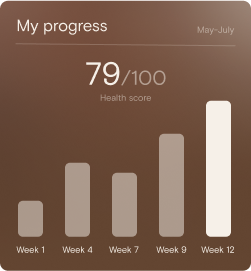What is Mean Cell Volume (MCV)?
MCV stands for mean (or mean corpuscular) cell volume. It’s a metric from the Full Blood Examination (or Full Blood Count) that estimates the average volume of each red blood cell in your circulation, measured in femtolitres (fL). Because red cells transport oxygen, MCV reflects one structural aspect of how well your oxygen delivery machinery is working.
Why does MCV matter for long-term health and wellbeing?
Oxygen delivery underpins cellular metabolism, recovery, cognitive function and physical performance. Subtle changes in red cell size—captured by MCV—can reflect shifts in micronutrient status, liver metabolism, red cell production dynamics, or other systemic influences. Monitoring MCV gives you a window into red cell health as part of a proactive approach: you can spot early signs of nutritional or metabolic imbalance, adjust your nutrition or lifestyle, and thereby support energy, vitality and resilience over time.
What’s an optimal level of MCV? (Lab vs optimal)
- Laboratory / reference range (adult Australian labs): ~80 to 100 fL
- Vively “wellness-focussed optimal zone” (hypothetical): while we don’t fix a single one-size-fits-all optimal boundary, many individuals may aim for a tighter central band (for example ~85–95 fL) that avoids extremes in either direction.
Because “normal” is broad and inter-individual differences exist, trend-tracking is often more meaningful than any single number.
What influences MCV levels?
Many factors can push MCV upward or downward, including:
- Micronutrients: E.g. low levels of folate, vitamin B12 or other cofactors (tending to increase MCV)
- Iron supply or utilisation: Limited iron tends to push cells smaller (lower MCV)
- Liver metabolism & alcohol intake: Heavier alcohol intake or impaired liver function may elevate MCV
- Bone marrow/red cell production kinetics: Increased immature (reticulocyte) output or shifts in production can alter average cell size
- Genetic or inherited traits: E.g. variations in hemoglobin synthesis
- Sample artifacts: Cell clumping or analytical effects can distort MCV readings
Because MCV is integrative, it is most powerful when interpreted alongside other red cell indices (e.g. red cell count, RDW, MCH) and your broader biomarker context.
What does it mean if MCV is outside the optimal (or reference) range?
- Below (low MCV): your red cells are on average smaller than typical, which may suggest constraints on red cell development (e.g. limited iron or other cofactors).
- Above (high MCV): your red cells are on average larger than typical, which may indicate shifts in production dynamics or micronutrient balance (e.g. shift toward larger immature cells, or mild cofactor insufficiencies).
In either direction, a modest deviation does not imply disease — but it provides actionable insight into a system under strain or adaptation. The point is not alarm but orientation: you can treat outlier shifts as signals to review your diet, lifestyle, micronutrients or metabolic load, and reassess in future measurement cycles.
How can I support healthy MCV levels?
- Focus on micronutrient richness particularly folate, B-complex vitamins and cofactors known to support red cell maturation
- Ensure adequate iron intake and absorption (e.g. via food pairing, gut health)
- Moderate alcohol consumption (as excessive intake may perturb red cell size)
- Support liver health (sleep, limiting toxins, metabolic load)
- Maintain balanced recovery and stress management, since red cell production is a regulated, resource-sensitive process
- Reassess on follow-up: track whether interventions shift MCV in a desirable direction over months
This information is provided for general health and wellness purposes only and does not replace medical advice.
References
- Royal College of Pathologists of Australasia (RCPA). Mean cell volume (MCV) laboratory manual.
- Healthdirect Australia. Full Blood Count (FBC) and red blood cell indices.
- RCPA / Australian labs standard reference intervals (e.g. NSWHP adult ranges)
- Silventoinen, K., Sammalisto, S., Perola, M., et al. (2003). Heritability of adult body height: a comparative study of twin cohorts in eight countries. Twin Research, 6(5), 399-408.
- Perkins, J.M., Subramanian, S.V., Davey Smith, G., & Özaltin, E. (2016). Adult height, nutrition, and population health. Nutrition Reviews, 74(3), 149-165.




















.png)
